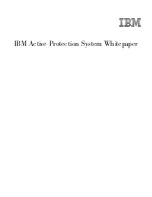
Chapter 17. User and Group Authorization
428
17.7.53.1. Operations
Operations
Description
read
View certificate profile defaults and constraints, input, output,
input configuration, output configuration, default configuration,
policy constraints configuration, and certificate profile instance
configuration. List certificate profile plug-ins and certificate
profile instances.
modify
Add, modify, and delete certificate profile defaults and
constraints, input, output, and certificate profile instances. Add
and modify policy constraints configuration.
17.7.53.2. Default ACIs
allow (read) group="Administrators"
|| group="Certificate Manager Agents"
|| group="Data Recovery Manager Agents"
|| group="Online Certificate Status Manager Agents"
|| group="Auditors"
allow (modify) group="Administrators"
Administrators, agents, and auditors are allowed to read certificate profile configuration; only
administrators are allowed to modify certificate profile configuration.
17.7.54. certServer.publisher.configuration
Controls read and modify operation for the publishing configuration.
17.7.54.1. Operations
Operations
Description
read
View LDAP server destination information, publisher plug-in
configuration, publisher instance configuration, mapper plug-
in configuration, mapper instance configuration, rules plug-in
configuration, and rules instance configuration. List publisher
plug-ins and instances, rules plug-ins and instances, and
mapper plug-ins and instances.
modify
Add and delete publisher plug-ins, publisher instances, mapper
plug-ins, mapper instances, rules plug-ins, and rules instances.
Modify publisher instances, mapper instances, rules instances,
and LDAP server destination information.
17.7.54.2. Default ACIs
allow (read) group="Administrators"
|| group="Auditors"
Summary of Contents for CERTIFICATE SYSTEM 7.3 - ADMINISTRATION
Page 15: ...xv Index 525 ...
Page 16: ...xvi ...
Page 38: ...Chapter 1 Overview 16 Figure 1 4 Certificate System Architecture ...
Page 82: ...Chapter 2 Installation and Configuration 60 rpm ev rhpki manage ...
Page 154: ...132 ...
Page 194: ...172 ...
Page 238: ...216 ...
Page 244: ...222 ...
Page 246: ...224 ...
Page 286: ...264 ...
Page 292: ...270 ...
Page 318: ...Chapter 13 Certificate Profiles 296 Parameter IssuerType_n IssuerName_n ...
Page 321: ...Freshest CRL Extension Default 299 Parameter PointName_n PointIssuerName_n ...
Page 398: ...376 ...
Page 412: ...390 ...
Page 472: ...450 ...
Page 506: ...484 ...
Page 528: ...506 ...
Page 546: ...524 ...
















































